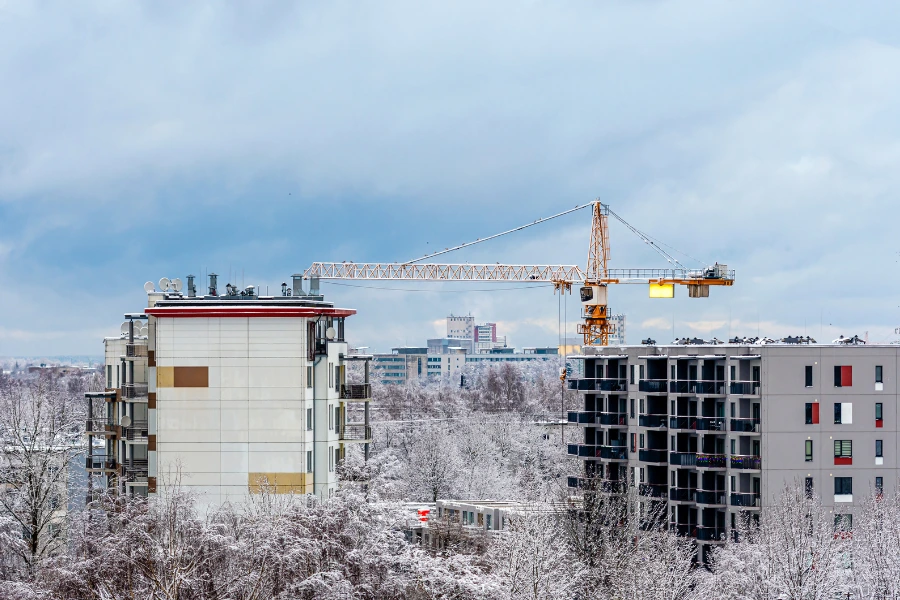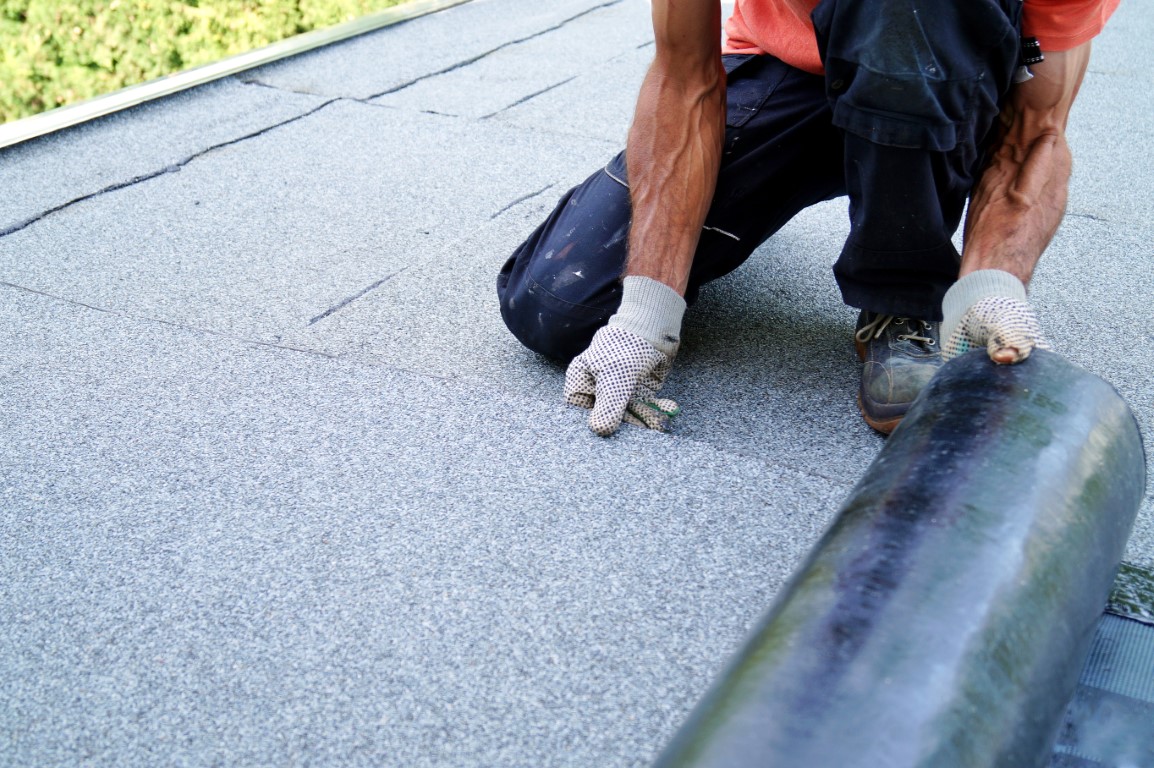The answer is yes, with the right technique and materials involved, winter roofing installations can be equally durable and efficient as those installed during warmer months. By using winter-compatible materials, such as Modified Bitumen, EPDM, TPO, and PVC, plus experienced professionals, such as Industrial Roofing, property owners can ensure durable and effective installations even at freezing temperatures.
Table Of Contents:
Recommendations for Winter Installations
Winter Roofing Installation Techniques
Recommendations for Winter Roofing Installations
Replacing or installing flat roofs in the Ontario winter needs to be planned carefully and requires special techniques to overcome problems associated with low temperatures and icy conditions. Here are a few key suggestions:
Select the Right Materials
Choose roofing materials that support cold temperatures such as Modified Bitumen, TPO, or PVC. EPDM can also be installed at lower temperatures, however it is not recommended at below freezing temperatures. Each of these will remain flexible and resilient enough to resist extremely cold temperatures.
Storage and Handling
- Store adhesives, membranes, and primers in warm areas to keep their effectiveness. Cold adhesives can lose viscosity, which may make application difficult or inconsistent.
- Roofing membranes should be allowed to relax at room temperature for several hours before installation to increase flexibility and reduce the possibility of cracking.
- Keep materials out of direct exposure to snow or moisture, which can compromise their performance.
Prepare the Surface
- Clean the snow, ice, and debris from the roof surface, using non-abrasive tools that will not further damage the substrate. For good adhesion, the surface should be dry and clean.
- Check the substrate to ensure it is dry and does not have any residual water. Water that remains can freeze and cause bonding problems or material failure.
- If necessary, warm the roof surface with thermal blankets or heaters to achieve favorable conditions for the adhesive application.
Adjust Installation Techniques
- Use heat welding for thermoplastic membranes, such as TPO and PVC, adjusting the welding temperature and speed to accommodate colder conditions. Test the welds to make sure seams are tight and secure.
- Hand-seal Modified Bitumen seams carefully to ensure thorough adhesion and protection against leaks.
- Additional time must be allowed for curing of adhesives since most chemical reactions take longer in cold weather. Don’t rush this process to ensure high quality results.
Safety First
- Provide insulated footwear, gloves, and cold-weather clothing to workers to maintain safety and comfort on the job site.
- Install temporary safety railings around the roof perimeter and ensure all workers connected via harnesses to prevent accidents on icy surfaces.
- Schedule work during daylight hours whenever possible to maximize visibility while minimizing exposure to extreme cold.
Work with Experienced Professionals
- Winter roofing requires specialized skills and expertise. Partner with experienced contractors, such as Industrial Roofing, who know how to adjust techniques and materials for cold weather conditions.

Winter Roofing Installation Techniques
Each roofing system has unique characteristics that affect its performance and installation during winter. Below, we’ll examine Modified Bitumen, EPDM, and TPO/PVC systems in detail:
Modified Bitumen
Modified Bitumen is one of the best options for flat roofs in Ontario’s winters, it remains flexible and durable in freezing conditions.
Installation Tips:
- Minimum installation temperature: -10°C (with proper precautions).
- Use a torch-applied or self-adhesive system, since cold-applied adhesives may take more time to cure in low temperatures.
- Hand-seal seams for maximum adhesion and leak prevention.
Advantages:
- Excellent durability and weather resistance
- Flexibility at low temperatures will reduce the chance of cracking.
- Capable of withstanding snow loads and freeze-thaw cycles without deterioration.
Disadvantages:
- Requires trained installers to ensure proper bonding in freezing temperatures.
- Torch-applied systems must be handled carefully to avoid safety risks in icy environments.
EPDM
EPDM roofing systems work well in moderate winter conditions but are less ideal in extreme cold.
Installation Tips:
- Minimum installation temperature: 5°C.
- Use specially formulated adhesives designed for cold weather to maintain bond strength.
- Ensure all primers and membranes are warmed before application.
- Avoid prolonged exposure of adhesives and membranes to sub-zero temperatures before installation.
Advantages:
- Retains flexibility in moderate freezing temperatures.
- Resistant to snow, ice, and moisture accumulation.
- Long lifespan, and it also shows very excellent resistance to UV, making it suitable to work in various climatic conditions.
Disadvantages:
- Adhesives may not cure properly in extremely cold temperatures, limiting effectiveness in harsher Ontario winters.
- Not recommended for harsh below-zero installation without taking proper precautionary measures.
TPO & PVC
Thermoplastic systems systems such as TPO roofing and PVC systems can be installed during colder weather but require careful handling.
Installation Tips:
- Minimum Installation Temperature: -5°C.
- Weld seams using hot-air welding, adjusting temperature and speed accordingly for cold weather. Monitor consistently to ensure welds are consistent in size.
- Perform test welds to ensure strong seams and proper adhesion under cold conditions.
- Store adhesives and membranes in warm areas prior to application.
- Water-based adhesives must not be applied under freezing conditions since they will freeze and never cure.
Advantages:
- Excellent chemical resistance, UV resistance, and extreme temperature tolerance.
- Ideal for snowy winters, as their smooth surface sheds snow effectively.
- Reflective properties reduce heat loss, hence improving energy efficiency during the winter months.
Challenges:
- Welding and adhesive curing take more care and time in cold weather, requiring skilled installers.
- Cold temperatures can make membranes stiffer and harder to handle during installation.
While winter does present some unique challenges for flat roof installations, they are entirely manageable with the right approach.
Industrial Roofing is known for undertaking roofing projects in winters, offering professional installation services for a range of roofing systems across Ontario. Contact us today to discuss your winter roofing needs and ensure your property is protected year-round.



